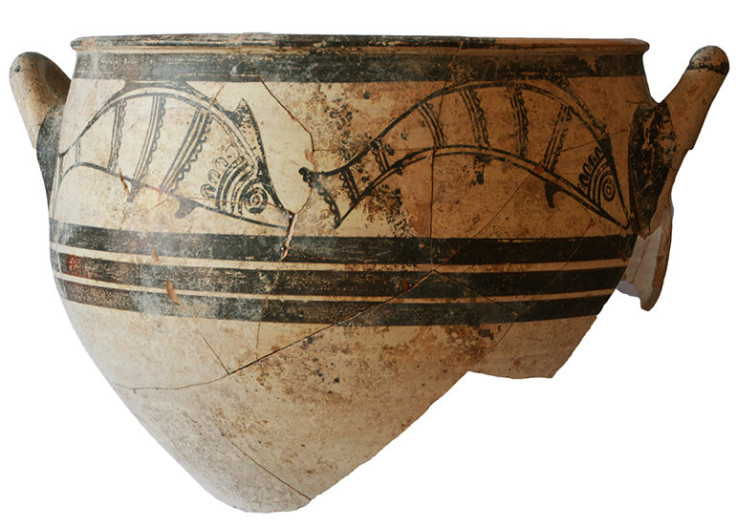Beautiful treasure in ancient Cyprus tomb reveals island was crucial Mediterranean hub
Artefacts from many ancient cultures were recovered from the large family grave.

A large tomb full of treasures from the Late Bronze Age has been discovered in Cyprus, archaeologists have revealed. The grave, and an associated offering pit situated a few metres away contain artefacts from places as diverse as Ancient Egypt, Syria, Mesopotamia and Greece.
The discovery was made by a team of Swedish archaeologists, as part of the Swedish Cyprus Expedition, which aims to further our knowledge of early Cypriot history. The project has been led since 2010 by Peter Fischer from the University of Gothenburg, who specialises in Cypriot and Near Eastern archaeology.
The tomb dates back to 3,500 years ago, and is one of the most luxurious ever found from the period in Cyprus. It is quite large, measuring three metres by four.
Located in the ancient harbour town of Hala Sultan Tekke, it appears to be a family grave, with the remains of eight infants and nine adults laid to rest inside it.
Rich and diverse offerings
The many objects discovered alongside the deceased, as well as in a nearby pit - a real treasure for archaeologists - indicate the group buried here was potentially very wealthy and important in the community.
Beautiful and elaborate gold artefacts including a diadem, pearls, earrings and scarabs, including ornamented ceramic vessels were recovered. They came from regions as diverse as Mesopotamia, Greece or Anatolia. Gold scarabs from Egypt and religious symbols vases and potteries attest to the symbolic importance of the offerings.

But more significant perhaps is the fact these objects originated from very different parts of the world, and were created by a number of fascinating ancient civilisations – confirming the fact Cyprus was crucial for trade and situated at the crossroads between cultures.
"This discovery is scientifically significant not only because of the richness of the tomb but because once again it shows Cyprus was an important hub in the Mediterranean during the late Bronze Age. It had connections with Mesopotamia, Greece, Egypt and Anatolia and this is well mirrored in the tomb and the objects that were found in it", Fischer told IBTimes UK.
Unique offering pit
The tomb is also unique because of its location near the offering pit. This is highly unusual in Cyprus. "The tomb is close to an offering pit where there are no skeletons, just precious objects. We believe it was intended to honour the deceased without reopening the tomb. It was a way to show respect to the ancestors and we don't have other evidence in Cyprus of such a feature in other tombs," Fischer says.

It could also be one of the only traces of a cemetery in Cyprus in the Late Bronze Age.
Indeed, the practice of burying the deceased underground appears not to have been very developed at the time.
"In the late Bronze Age period in Cyprus, people tended to be buried inside their houses rather than in cemeteries. No cemeteries from the period have been found so far, so this could be quite an exciting find in that respect," Fischer concludes.
© Copyright IBTimes 2025. All rights reserved.






















